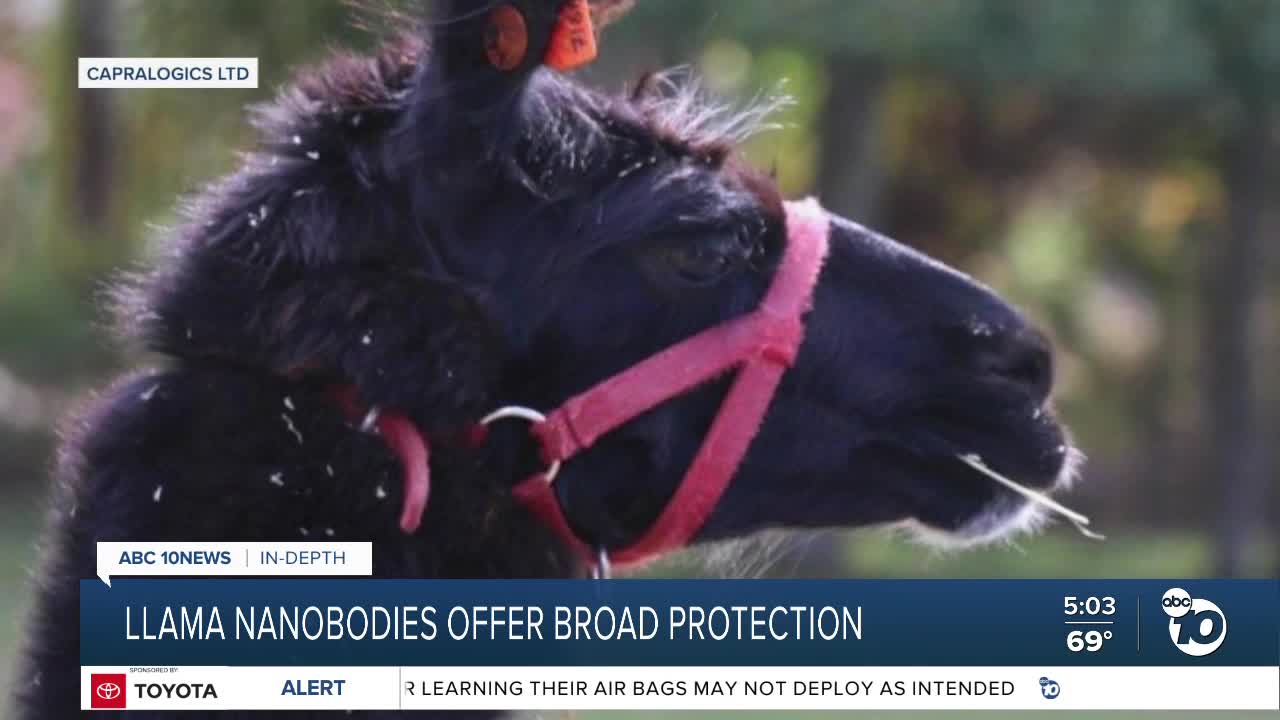SAN DIEGO (KGTV) – Tiny immune particles derived from the blood of a llama named Wally show strong protection against every COVID-19 variant of concern and 18 other sabrecoronaviruses.
A series of new lab experiments by researchers in Pittsburgh and San Diego suggests these llama immune molecules called nanobodies could be a fast-acting inhalable treatment or spray. The paper has not yet been peer-reviewed by a scientific journal.
“Because of its broadly neutralizing activity, it will be most likely useful and effective against future variants and future outbreaks by SARS-like viruses,” said lead author Dr. Yi Shi of the University of Pittsburgh.
Compared to the rest of the animal kingdom, llamas, camels and alpacas have unusual immune systems. They produce antibodies with one chain instead of two, making them optimal targets for bioengineering.
By cutting off the tips of these camelid antibodies, researchers are left with a strong and stable molecule that is roughly one-tenth the size of a normal antibody: a nanobody.
Its tiny size may be a crucial advantage against a rapidly mutating virus, said co-author Dr. Ian Wilson of Scripps Research.
“The smaller size gives us an opportunity to get into more recesses, nooks, and crannies on the virus surface,” he said.
Dr. Wilson helped the team analyze atomic details of the various nanobodies to narrow down the ideal candidate for a drug.
In the latest paper, the researchers discovered that by vaccinating Wally over and over, the shape of his antibodies started to morph. Instead of producing antibodies laser-focused on SARS-CoV-2, Wally began to churn out antibodies capable of recognizing a wide array of coronaviruses
By the eighth vaccination, Wally achieved “super immunity” against everything from SARS-CoV-1 to bat viruses. The researchers think they can harness that broad protection for humans.
Nanobodies work like traditional monoclonal antibodies from humans that have become well-known during the pandemic. These defensive immune molecules stick to a virus and block.
However, regular antibodies typically have to be administered to patients in a lengthy IV infusion. They’re also much more expensive to manufacture.
Nanobodies are more stable molecules, so they can be administered in an inhaler or spray, targeting the drug to the upper respiratory system where it’s needed most, Dr. Shi said.
The FDA approved the first llama nanobody drug in 2019 for a rare blood disorder. Since the pandemic, several labs, including UC San Francisco, have been trying to be the first to create a nanobody for COVID.
RELATED: With help from llamas, California researchers are developing a spray to prevent COVID-19
The Pittsburgh-led effort is hoping to get their drug into pre-clinical trials soon, but that means it’s still at least six months to a year or more away from reaching the market.





